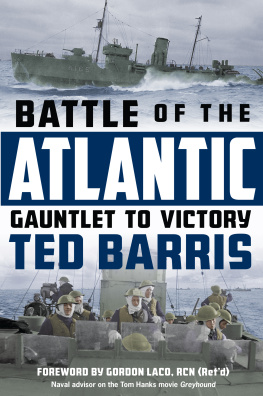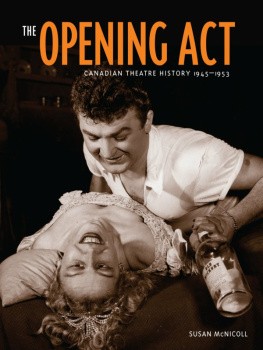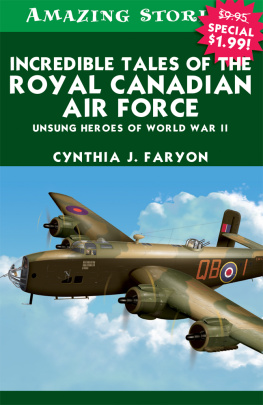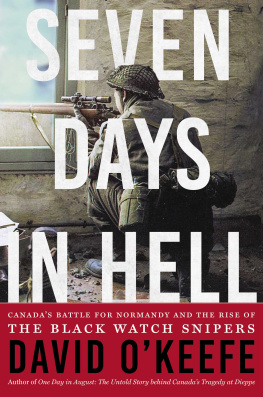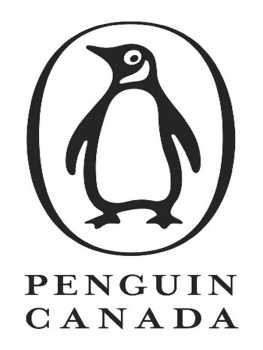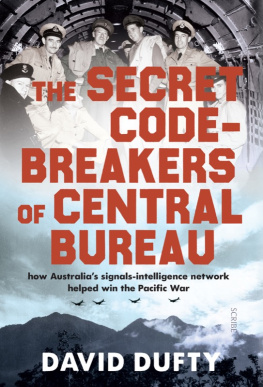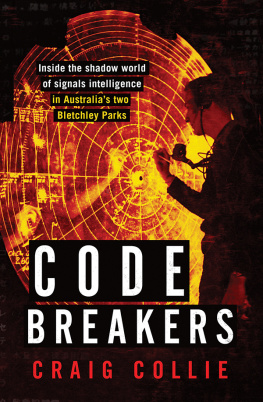The Invisible War
The Invisible War
The Untold Secret Story of
Number One Canadian Special
Wireless Group
Royal Canadian Signal Corps,
1944-1946
Gil Murray

Copyright Gil Murray, 2001
All rights reserved. No part of this publication may be reproduced, stored in a retrieval system, or transmitted in any form or by any means, electronic, mechanical, photocopying, recording, or otherwise (except for brief passages for purposes of review) without the prior permission of Dundurn Press. Permission to photocopy should be requested from the Canadian Copyright Licensing Agency.
Publisher: Anthony Hawke
Editor: Lloyd Davis
Design: Jennifer Scott
Printer: Transcontinental
Canadian Cataloguing in Publication Data
Murray, Gil, 1925
The invisible war: the untold secret story of Number One Canadian Special Wireless Group, Royal Signal Corps, 19441946
ISBN 1-55002-371-3
1. Canada. Canadian Army. Royal Canadian Corps of SignalsCanadian Special Wireless Group, 1HistoryWorld War, 19391945. 2. World War, 19391945.Communications. 3. Canada. Canadian ArmyCommunication systems. 4. World War, 19391945Regimental historiesCanada. I. Title.
D768.15.M87 2001 | 940.548671 | C2001-902249-2 |
1 2 3 4 5 05 04 03 02 01

We acknowledge the support of the Canada Council for the Arts and the Ontario Arts Council for our publishing program. We also acknowledge the financial support of the Government of Canada through the Book Publishing Industry Development Program and The Association for the Export of Canadian Books, and the Government of Ontario through the Ontario Book Publishers Tax Credit program.
Care has been taken to trace the ownership of copyright material used in this book. The author and the publisher welcome any information enabling them to rectify any references or credit in subsequent editions.
J. Kirk Howard, President
Printed and bound in Canada.
Printed on recycled paper.
www.dundurn.com
Dundurn Press
8 Market Street
Suite 200
Toronto, Ontario, Canada
M5E 1M6
Dundurn Press
73 Lime Walk
Headington, Oxford,
England
OX3 7AD
Dundurn Press
2250 Military Road
Tonawanda NY
U.S.A. 14150
Contents
Prologue
The true story told in the following pages is neither one of daring Second World War valour nor of gory hand-to-hand combat. For those we refer readers to the many books on the spectacular campaigns in which thousands of heroic Canadians died in bloody land, sea, and air battles. What will be described here is how a group of young Canadians fought secretly and helped to win the war in the Pacific on an invisible battlefield: the airwaves that carried vital facts about Imperial Japanese troop strengths, supply states, and targets of their next assaults. Without the continuous secret interception and deciphering of Japanese military signals by Allied Special Wireless units, of which Number One Canadian Special Wireless Group (1CSWG) was an important part, the Allied forces would not have had the vital advance information about Japanese battle plans that enabled them to win time after time.
Long after the wars end, the very existence of 1CSWG and its part in the Pacific victory has remained unknown to Canadians. Canadas contribution to the top-secret Allied operations known in the Pacific as Magic and in Europe as Ultra could not be told under the Official Secrets Act. After the war, top Allied leaders would quietly praise Magic and Ultra as being among the overwhelming factors that led to victory on both the Pacific and European fronts. With the help of these inspired operations, the Allied land and sea forces were able to inflict heavy damage upon the enemy. Many more lives would have been lost had the Allies been forced to fight blind.
While Canadian military strength was necessarily focused on the war in Europe, the 336 officers and Other Ranks of Number One Canadian Special Wireless Group represented Canadas principal contribution to the war against an enemy that once threatened to invade its west coast. The Invisible War is the story of their part in the unseen and unsung War of the Airwaves over the Pacific, told by a member of 1CSWG.
Note: In some cases, names have been changed to protect those who either did not wish to be identified or who could not be consulted.
Publishers Foreword
In the spring of 1944, Gilbert S. Gil Murray, the author of this account, was six months past his eighteenth birthday, at which point he had to make the grand decision so many others of his countrymen had made before him: whether to volunteer for active wartime service in the Canadian armed forces, or let himself be called up into the non-combatant militia. When the frail-looking youngster who saw himself as a 155-pound weakling chose to volunteer for active service anywhere in the world, he fully expected to be rejected as physically unfit. Instead, he was classified A-1 and, two months before D-Day, he found himself in the Canadian Infantry Corps.
By the time theyd completed both the basic and the rigorous advanced infantry training, Murray and his fellow riflemen were poised to be sent into action in France or Italy, where the battle for Europe was at its height. But before that could happen, Murray was asked to volunteer for active service a second time, for an unexplainably secret assignment in the Far East. He and three others in his battalion accepted the challenge, not knowing what it might involve. From that moment on, he was part of a top-secret group of more than three hundred Canadian volunteers for the war in the Pacific. Number One Canadian Special Wireless Group (1CSWG) of the Royal Canadian Signal Corps was the first and only Canadian Army unit sent to the Pacific since 1941, when two thousand ill-trained recruits had been killed or captured at Hong Kong.
Born under the tightest military secrecy, 1CSWG was meant to take Canadas already well-established success at intercepting Japanese military signals closer to the theatre of war. So sensitive were the units activities that, under Canadas Official Secrets Act, its members were strictly forbidden for thirty years afterward to reveal what kind of work they had done in the Pacific theatre. Contrary to the general belief that the war in the Pacific involved only the United States and Japan, the Allied cause received extensive co-operation from Britain, Australia, Canada, New Zealand, the Netherlands, and India. Indeed, Canada and other Allied countries had been monitoring Japanese military signals since before the outbreak of war in the Pacific in 1941.
To this day, long after the thirty-year embargo was lifted, the story of Number One Canadian Special Wireless Group has been waiting to be told. All clues to the existence of 1CSWGas with Camp X, the secret Ontario training base for Allied spies and saboteurshave been buried in government files. Gil Murray wonders why.
Book One:
Canadas Key Role
in the War in the Pacific
Next page

